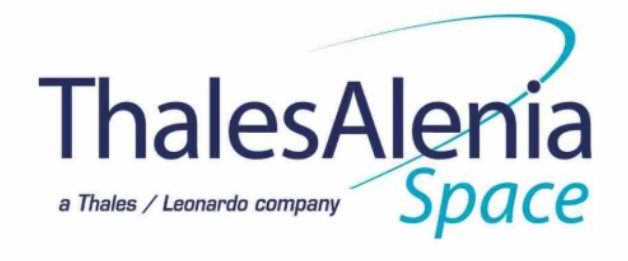
-
StatusCompleted
-
Status date2022-01-17
-
Activity Code5C.390
As of today, performances of antenna systems are evaluated analysing both measured and modelled data. If an anomaly occurs, an iterative process is made to determine the root cause. The goal of this project is to develop and validate AIDA (Artificial-Intelligence-Assisted Performance and Anomaly Detection and Diagnostic), a machine-learning-based software for the detection of RF anomalies and the identification of the associated root causes.
AIDA intends to contribute to the antenna experts analysis and to reduce the diagnosis time by implementing the following software capabilities:
-
Early identification of antenna system anomalies, using an AI approach to classify patterns data, implementing generalization strategies in order to foster re-use of a trained model for different antennas under test (AUTs).
-
Accurate anomaly quantification, thanks to a wide labelled database which is used for this purpose.
-
Verification of the anomaly classification and quantification output, comparing the measured patterns with the EM model data updated with the AIDA diagnostic output.
The key challenges are the following:
-
Exploit artificial intelligence techniques (e.g. supervised machine learning) for diagnosing RF anomalies
-
Implement generalization techniques to foster re-use of the trained AI model for antennas having different dimensions or operating at different frequency bands with respect to the dataset used for the training
-
Use of real or simulated data with known output labels for training the AI model
-
Reduce the diagnosis time by a factor of 10/100 (i.e. from two weeks up to one day or less).
-
Develop a software framework for testing the AI model, and for execute comparison analyses between data.
The benefits of AIDA are the following:
-
AIDA shows very good classification performances when testing antennas of the same operative band as the training dataset;
-
AIDA can receive as input data from antennas operating at different frequency bands or having different characteristic dimensions, thanks to the generalization approach implemented;
-
AIDA functionalities can be reached from an intuitive web-based front end which drives the user during the entire diagnostic workflow. The user can access to the training database, as well as to the test dataset, investigating the data both in the form of text files and of plotted patterns. Moreover, he can personalize each run adding annotations.
-
AIDA gives the possibility to the user of checking the goodness of an anomaly detection directly in the software front-end, computing a comparison between the measured pattern and the updated EM model pattern;
-
AIDA provides anomaly quantification with good accuracy for specific anomaly classes;
-
The implemented algorithms do not need experts’ knowledge on Artificial Intelligence to be configured, but only limited information and knowledge to define the relevant antennas anomalies to be considered.
AIDA main features are the following:
-
AIDA determines the anomaly which characterize a test input antenna using an AI model which has been trained with a fully supervised learning method.
-
From the input antenna raw patterns, derived quantities are computed in order to generalize the use of the software to similar antennas mounted on different platforms.
-
Additional methods are implemented in order to manage data from antennas at different frequency bands and with different characteristic dimensions.
-
Once the anomaly classification is concluded, a search for the most similar antenna at database to the antenna under test is made in order to compute the anomaly quantification.
-
The anomaly classification and quantification output is usable by the user to update the EM model of the antenna.
-
Once the EM model is updated, AIDA gives the possibility to verify the diagnosis by comparing the updated patterns with the measured data.
All the diagnostic features of AIDA are accessible from the AIDA front-end, with which the user can:
-
Operate a diagnostic run;
-
Navigate different plots of both raw data and computed AI input data, extracting cuts, and comparing different antennas;
-
Download diagnostic results;
-
Add notes to the diagnostic run where specify useful information.
AIDA is characterised by a typical three tier architecture composed by:
-
The AIDA database, which collects all the antennas patterns uploaded into the system (training and test data);
-
The AIDA Diagnostic SW, which executes the anomaly classification and quantification, and it contains the function usable for the computation of the reconstruction error; the AIDA Diagnostic SW functionalities can be accessed both from the command terminal and from the developed AIDA Front-end SW.
-
The AIDA Front-end SW, which is a web-based application from which all the features of the AIDA Diagnostic SW can be reached. Moreover, this software allows the user to investigate data from the database, plotting patterns and investigating diagnostic results.
The AIDA Training SW is an external module, which is responsible for the training of an AI algorithm, either imposing the training hyper-parameters, or using an hyper-parameter optimization; in the current version implemented, the AIDA Training SW functionalities can be accessed from the command terminal.
The project comprises the following working packages:
- WP100: identify state-of-the-art AI methods suitable for the diagnostic system to be developed, defining a technical specification of the proposed solution, and demonstrating its feasibility.
- WP200: prepare a preliminary training dataset for the selection of the candidate AI methodologies, and operate the trade-off analysis for the selection of the algorithm to be implemented.
- WP300: prepare the final training dataset to be used for the training of the selected AI algorithm, implement the diagnostic strategy and implement the framework of the front-end software.
- WP400: demonstrate the functionalities of the diagnostic solution, operating a test campaign.
- WP500: summarise the results achieved during the project, identifying future developments points, and pointing out the most important lessons learnt.
The AIDA diagnostic solution has been tested with data of reflector and phased array antennas. Performances have been proved satisfying If the input is composed of antennas having the same operative conditions as the training dataset. If the operative conditions differ from the training dataset, the classification accuracy depends from the anomaly class considered. Possible improvement points have been addressed as particularly important to attain performance levels suitable for the market needs and future RF technologies.





